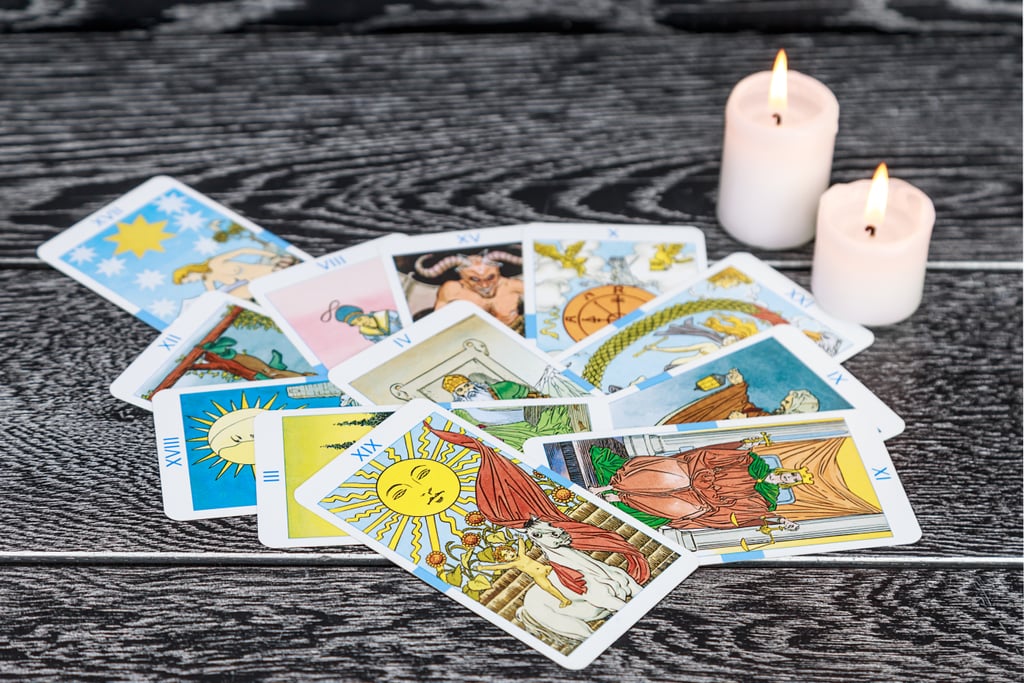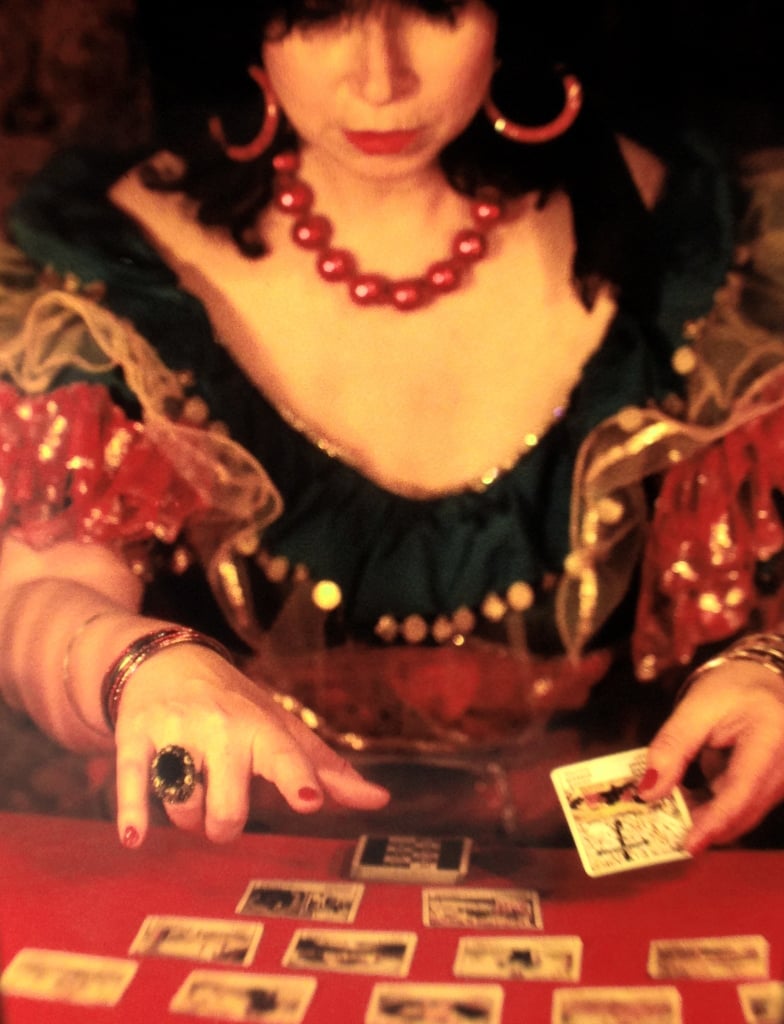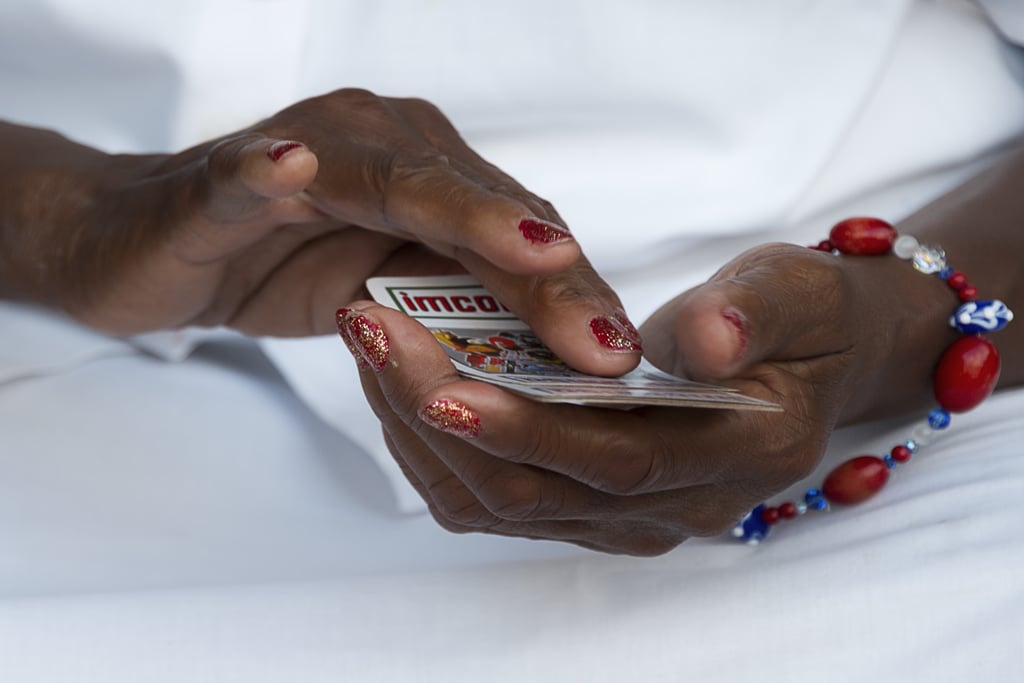So, you like magic [1] huh? Well you've come to the right place. Spiritual self-care has had a major revival in the Western world, especially amongst women. Often called "natural magic", this includes practices like astrology [2], alchemy, herbology, and divination. Tarot card reading is a form of divination (seeking insight from spirit guides), and whether you believe in it or not, it's a great way to connect with your own personal power — and it makes a pretty cool party trick.
Think of how many of your friends are charmed by the calming properties of crystals [3], light candles [4] to set the mood when trying to unwind, or swear by natural remedies and herbs instead of pharmaceuticals. It's undeniable that the world around us carries vibrations, and many of us can sense when something has "good" or "bad" vibes. Intuition is real and powerful, but first, we have to know how to communicate with it. Divination is a great way to connect with our "inner voice" or "gut feeling", but before you start gazing into a crystal ball or invest in a hefty book on palmistry — tarot card reading or "taromancy" is perhaps the easiest form of divinatory magic.
My personal introduction to taromancy started when I was a child. I grew up in a very spiritual, "magic-positive" household with my mum playing tarot games with her friends very often. I started collecting crystals and became curious about spell books and casting at around age 7. It wasn't until age 21 that I started identifying as a witch. Since then, I go through phases of magical curiosity, but when it comes to tarot reading — that started in University. I was in the throes of adulthood and just needed something to make me feel more at ease with sorting out my own life. Since about 2014, I've been reading and researching tarot cards and their histories.
Curious to know more? Keep reading for my simple guide to navigating your first tarot deck.
Choosing Your Tarot Deck
There are literally hundreds of decks to choose from. Although they all carry the same story, the imagery may appeal to different cultural and ethnic backgrounds, and some decks are simpler to read than others. If you're just starting out, it's best to choose a deck that "speaks" to you, meaning a deck that is easy to read and has an origin that can complement your own.
The Original Rider Waite Tarot Deck
The Original Rider Waite Tarot Deck [5] (£9) is the ideal choice for English-speaking beginners. The imagery, created by artist Pamela Colman Smith, is vivid and easy to decipher. The deck is of British origins, with illustrator and occultist Colman Smith being born in London. She then grew up in Manchester, before moving to New York to study fine art at Brooklyn's Pratt Institute and finally she moved to Kingston, Jamaica, where she created much of her illustrative work.
Although many witches credit the divinatory powers of the deck to Colman Smith's own enchanted form of synesthesia, her illustrations were commissioned by the mystic Arthur Edward Waite. Both Colman and Waite were members of The Hermetic Order of the Golden Dawn, which was a British secret society dedicated to the study of magic. It was one of the first and only secret societies of its time (late 19th century) that admitted women on an equal basis to men. Bram Stoker, the Irish writer best know for the horror novel Dracula (1897), was also a member.
Tarot Decks with Diverse Representation
Although The Original Rider Waite Tarot Deck has an exceptional history, it's not ethnically diverse. So, if you'd prefer a deck with more inclusive representation, we'd recommend checking out:
Our Tarot [6] (launching Spring 2020), by Sarah Shipman, which is a truly feminist deck. It features images of influential women throughout history, like Harriet Tubman, Sophia Duleep Singh, and Joan of Arc.
Dust II Onyx: A Melanated Tarot Deck [7], by Courtney Alexander, features beautiful illustrations of African ancestors.
Kaleidadope Tarot: A Dope Deck [8], by Krystal Banner, has diverse pop culture iconography, like Beyoncé depicted as a goddess, LGBTQ+ imagery, and brown Lego men dressed as Knights — a fun one for party tricks.
The Legacy Of The Divine [8], by Ciro Marchetti, depicts modern illustrations of Native American and South American iconography.
Getting to Know Your Tarot Deck
After you've chosen your deck, it's time to charge it up with good vibes. With tarot, as with magic, what you give is what you get. Just like making a new friend, both you and your deck need time to create a genuine connection. The better you know your deck, the more accurate and effortless your readings will be.
Tarot decks are split into two parts: the Major Arcana and the Minor Arcana — where the Minor Arcana is further split into four suits: Swords, Cups, Wands, and Pentacles (or Coins).
The Major Arcana
The Major Arcana are the main cards that show the big picture of the reading. They can suggest the direction of past, present, and future events, major life choices, lessons, and possibilities. There are usually 22 Major Arcana cards, and it's best to do your own deep dive into each of their unique meanings. The Fool, for example, suggests "new beginnings", Death means "the end of a phase", and The Empress represents "the divine feminine energy".
The Minor Arcana
Each suit of the Minor Arcana includes 14 cards, and is associated with an elemental energy. Swords is air, Cups is water, Wands is fire, and Coins is earth. If you're familiar with astrology, then you might know that each element is also associated with a terrestrial quality: air is connected to thought, water to emotion, fire to action, and earth to practice. The Minor cards give insight into the smaller picture — our day-to-day decisions, struggles, and wins, with each card showing a unique step of our journey.
Getting to Know Your Deck
We'd recommend laying out all the cards on a table. Start by placing the Major Arcana in their natural order at the top and the Minor Arcana underneath in the order of how they naturally exist — meaning air at the top because it rises, then water because it falls from the sky, fire because it floats above the earth, and then earth because it's the most grounded. Once you've organised your cards, you'll start to see that the deck, as well as each individual suit, tells a story of reflection, self-doubt, self-acceptance, longing, conflict, hard work, accomplishment, and glory. To get a better idea of the card meanings, we recommend checking out Tarot.com [9].
Giving a Tarot Card Reading
Taromancy is another name for reading tarot cards. When giving a tarot card reading to yourself, or others, there are various types of "spreads" that are best suited for answering different types of questions. To keep things simple, I'll focus on the most popular: "the three card spread". But if you're looking for love, there's certainly a spread for that, too.
Before Your Reading
Atmosphere is important — physically and mentally. It's best that you try and set the mood for the reading with candles, crystals, incense, soft music, or anything that gets you in a meditative, calm, and clear mindset. Really think about a query, have a clear intention, and keep an open heart and mind. Everyone has their own way of reading cards, but personally, I see the readings as more of a reflection of your circumstances — like a mirror — than a guide to help you make the right choice. Your reading is meant to give you some clarity, or insight into a situation. Instead of asking: "Do they love me?" Or "Will I get the job?", why not try asking "What steps can I take to welcome more love into my life?", or "What strengths must I be more aware of to thrive in my career?"
The Three Card Spread
The three card spread is the easiest for getting a quick answer. All you've got to do is pull three cards at random. You can shuffle all of the cards, lay them out on a table and mix them up, or break the deck into three parts and pull the top card from each pile — it's really whatever feels right and comes most naturally to you. Depending on your query, the three cards may represent: past/present/future, mind/body/spirit, or background/problem/advice.
Some guides will tell you that whether the cards come out upright or reversed — they suggest positive or negative meanings of the card. But personally, I take the good and bad of every card, or naively focus on the positive meanings. It's completely up to you.
Although each card has its own specific meaning, it helps if you are comfortable with reading a "visual language". The answer to your query should tell a story — a combination of the card meanings, the illustrations, and how they all fit together for a succinct narrative.
Minding Your Intentions
The voice of Magic comes from the unseen world. Whatever you think you're projecting onto your tarot cards, they may be responding to the true intentions of your heart — which might be unconscious to you. To keep your deck surrounded by good vibes, these are a few personally tried-and-tested steps you can take:
Protecting Your Cards' Energy
Tarot cards are energy portals that both project and absorb energies. Whether it's you, a friend, or a stranger — try to be in a sound mood when handling them. Acknowledge your cards with respect, give them a view of a full moon, take them out into nature, or speak to them in a loving way. If you often give readings to others, it could help to have multiple decks — perhaps one for yourself and your close friends and another for party tricks and acquaintances.
When Your Deck Gets Stuck
If you use your cards often enough, you might start getting the same repeat cards. This happens when the deck is either tired of you asking the same boring question, or it's trying to drive home a point that you are not really listening to. The best way to fix this is to just take a break, seek guidance elsewhere, and do your own personal "cleanse" of the cards — maybe write a poem for your cards, surround them with purifying crystals, or burn a cleansing candle in their honour.
Are Cards Jumping Out at You?
Sometimes the deck has a mind of its own. If you notice that certain cards are repeatedly jumping out at you, then this may be an urgent message that you need to pay attention to. There are also unique cases where you pull one single card over and over again. This might be the deck giving you your own totem within its story — a card that will represent "you" in future readings.
I hope that my beginner's guide to the tarot deck was helpful. Always remember that you hold the ultimate power over your own life. Nothing is ever "set in stone" and you are able to transform and change the course of your own journey at any moment — enjoy!



